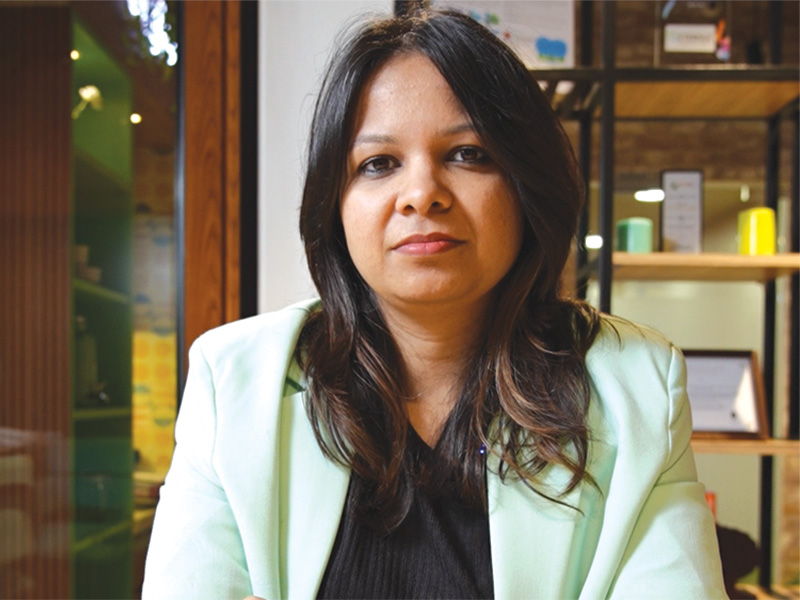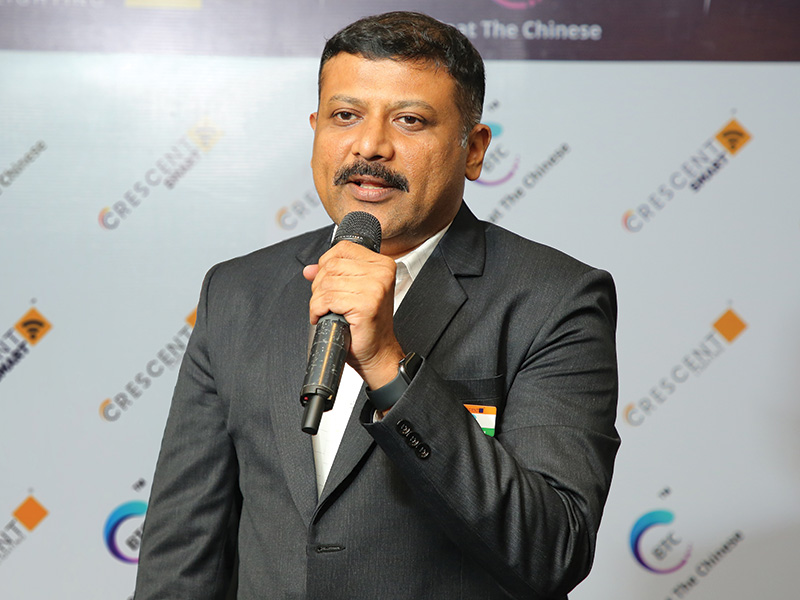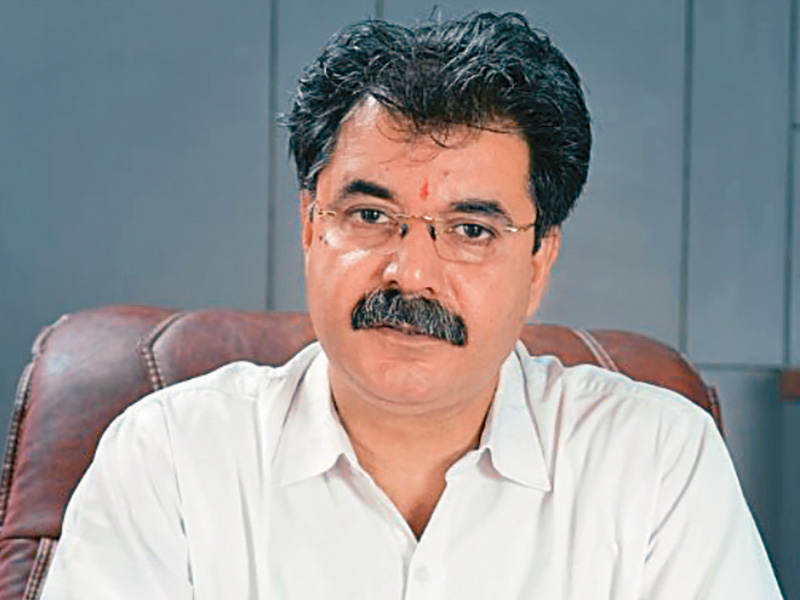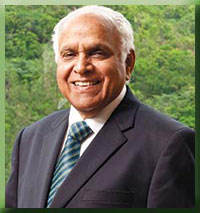
How do you see the green building movement in India and challenges in the way of its development?
Today, ten years after IGBC started, we look back with some satisfaction that our journey has been fulfilling & exciting. India is today seen amongst the top 5 countries having a large green building footprint.
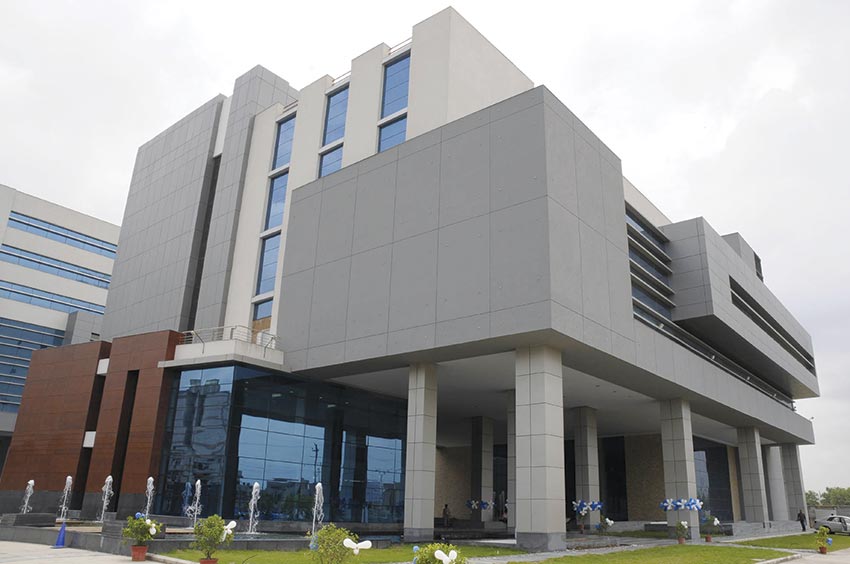
With a modest beginning of 20,000 sq.ft. green built-up area in the country in the year 2003, currently, we have over 1,950 registered green building projects, amounting to over 1.35 Billion sqft of green building footprint, with projects spread across the five climatic zones of the country. Today, India is well poised to go to the next level in holistically addressing the ecological issues and concerns. We have been able to demonstrate that green makes good business sense.
The next 10 years will be the decade of integrated sustainable built environment. This will mostly be in the form of large integrated townships, satellite cities, gated communities and campuses with multiple buildings. In light of this, we need to brace up to promote green buildings on a mammoth scale.
We have visualized that in a decade or so time India would witness the following:
- It would be seen as 'thought leader' in sustainable built environment by 2025
- Have Green buildings which would be less costly than conventional buildings
- Have Green buildings that will be energy positive and exporting power to grid
- Export green building materials & services to other countries
- Create products with positive impact
- Promote vertical & horizontal landscape
- Will promote Renewable sources driven A/c systems
Although we are seeing this type of construction flourishing well in India but there are some hindrances in the way of its development. The challenges involved in promoting this movement include:
- Reach out of green building concepts to tier II & tier III cities
- Increased awareness on the need and importance of green buildings
- Capacity building of all the stakeholders
- Inclusive Development
- Promote indigenously manufactured cost-effective products & technologies
- Include all communities in the green building agenda. Demonstrate model green building projects in atleast 100 villages
- Establish 'IGBC Student Chapters' in 100 architectural colleges and in equal number of engineering colleges, across the country
- Facilitate 500 indigenous product manufacturers to brand and market their products on basis of green building attributes
- Develop green building local standards in areas where presently none exists.
- Facilitate the establishment of R & D and material testing labs within India.
- Reach all sections of the stakeholders through the IGBC local chapters and address local aspirations
Sustainability according to me 'is respecting and adoring Mother Earth for its bounty and ensuring that our children and their children will equally or more enjoy her offerings.
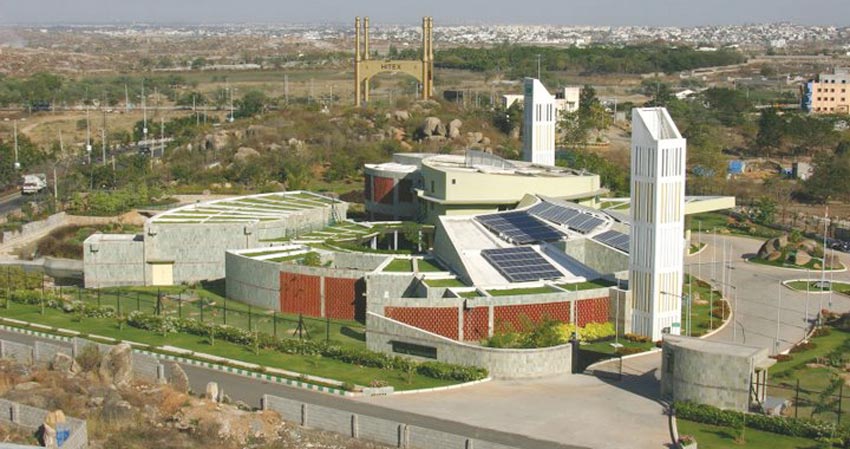
For us in India, Green & Recycling are our heritage and in our DNA. However, we have somehow drifted away, which in turn is causing severe stress & strain on our finite natural resources.
We need to go back to our roots and appreciate the rich architectural heritage and ethos. We in IGBC are consciously making efforts in developing green buildings which are a rich blend of India's rich architectural heritage and state-of-the-art technological innovations.
Sustainability approach in all our pursuits will decide our future.
Could you please outline IGBC recent strategies for attaining 'sustainability' in a project?
IGBC Green Building Rating Systems for India, which were launched in 2007, is receiving overwhelming response from all the stakeholders. Today, we have launched green building rating system for Homes, SEZ, Factory Buildings, Landscape and Commercial Buildings.
All these Rating Systems have become National by choice and Global in performance and are voluntary, consensus based and market-driven building programmes.
Our rating systems are such that buildings will implement some minimum requirements. For example, higher vegetated areas, Rain Water Harvesting, reuse of treated waste water, efficient building envelope design, high performance lighting & A/C Systems, use of eco-friendly material amongst other measures to attain sustainability in the projects.
The bar is raised in every two years in order to make it challenging and drives value to the customer.
Is constructing a green building costly? Please enlighten us about its cost-benefits?
Constructing a green building by design is not at all costly. This is only a mis-conception which is not true. In fact, many of the recent green building projects certified by IGBC have demonstrated that cost of green building design and construction attracted insignificant incremental costs and few other projects have actually demonstrated leadership in bringing down the construction costs lower than conventional building's first cost.
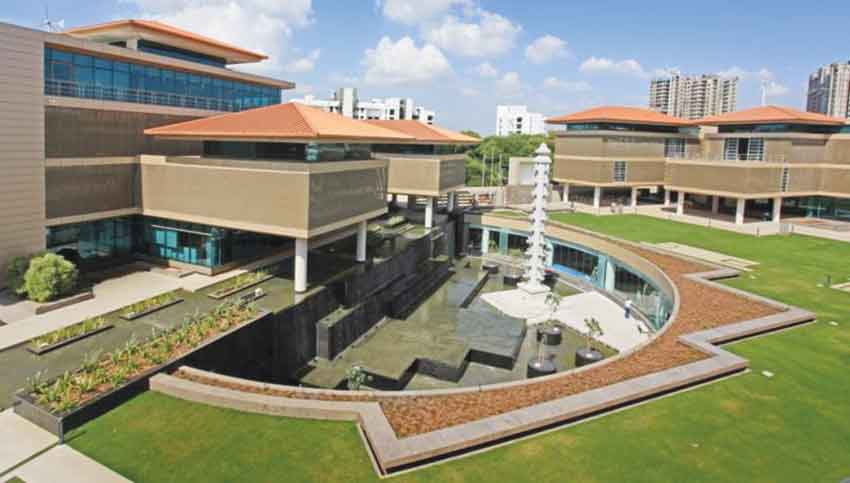
The construction costs of a green building would be 5-8% higher for a Platinum building than a conventional building, the incremental cost gets paid back within 3-4 years with substantial reduction in operational costs. The following table illustrates the declining initial incremental cost over years.
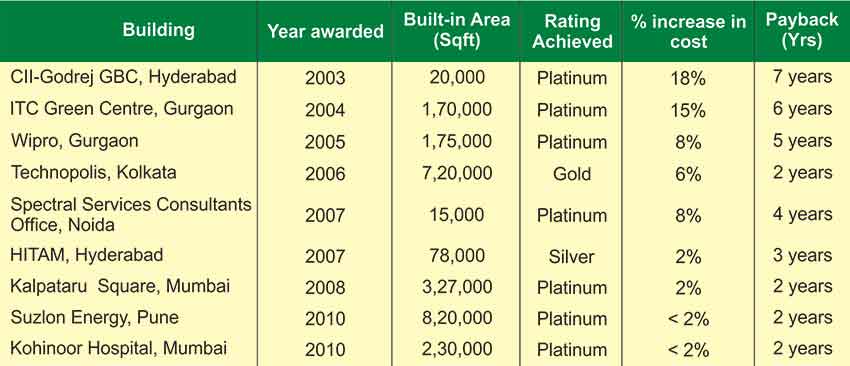
Today, India with over 1.27 Billion sq.ft of green building footprint and over 1,810 registered green building projects is one among the top 3 countries having a large green building footprint. This is a clear testimony that stakeholders are willing to go the Green way.
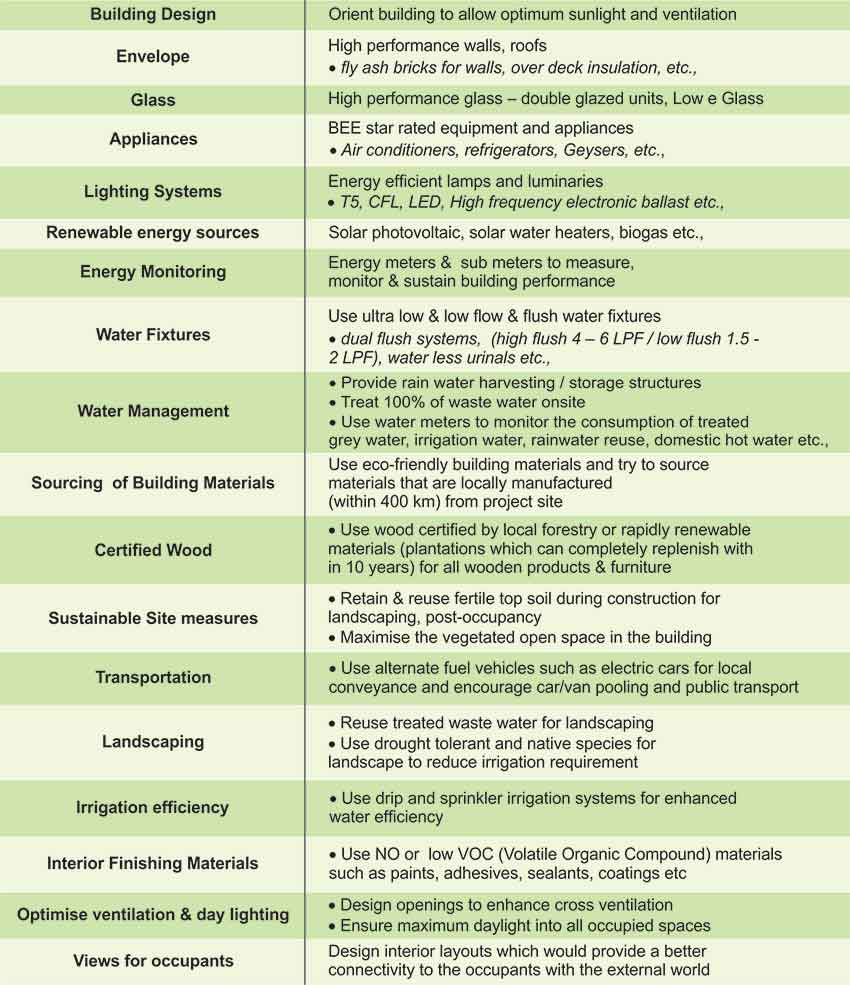
Can you name some of the features that should be incorporated in a building to make it a green?
Some of the illustrative green building features that have been incorporated in green buildings include:
Currently, how do you see the demand and market of green products and technologies evolving in India and their availability and cost-competitiveness?
The steady increase in demand for green buildings has brought down the cost of products, services and materials, thus making green buildings affordable. With more green projects coming up, local manufacturers have started producing green building products and technologies.
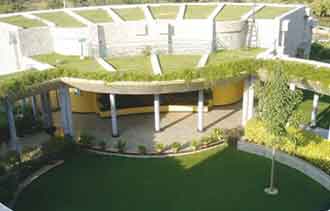
A classic example of the cost of a product decreasing is the waterless urinal. The waterless urinal costed Rs. 14,000/- when the CII Godrej GBC building was constructed, in 2002-2003 today it is available for Rs.6,000/- It is estimated that the market potential for green building products and technologies to be over $100 Billion by 2015.
IGBC has launched the online version of Green Building Material Directory which would facilitate easier decision making for selecting material & services. The online version is available on www.igbc.in
The Directory contains contact details of 352 manufacturers and 21 Service providers, segregated under 5 major heads, Energy Efficiency, Water Efficiency, Material Products & Technologies, Indoor Environmental Quality and Service Providers.
These numbers indicate the growing numbers of green building products & technologies. We are in the process of developing the second volume of the Directory with the updated details and information of technology and service providers.
There is immense market potential for green buildings which are waiting to be tapped and explored.
What has been the role of government in shaping green building environment? Any example of other countries where green buildings are given policy supports in terms of incentives on lower power tariff, lower bank loan, lower taxes, and lower insurance.
IGBC works closely with the Central and state governments in mainstreaming the green building movement in the country. To name a few, some of Incentives provided by the Government include:
- Ministry of Environment and Forests (MoEF, GoI) is providing Faster Environmental Clearance to projects applying for IGBC Green Building Certification (Precertified)
- The Higher Floor Area Ratio (FAR) announced for NOIDA & Greater Noida Development Authority augurs well for the construction of green homes
- Hyderabad Metropolitan Development Authority (HMDA) is offering automatic fast-track clearance through Green Channel for all buildings which adopt the Indian Green Building Council Norms for Green Buildings.
- State Bank of India (SBI) is offering concessions to developers & owners constructing green homes.
What measures one should adopt to promote awareness about green building practices for the benefit of professionals in the construction industry? How do you map it with the overall economic development and business potential of India?
We Indians by nature imbibe many eco-friendly practices. For instance, we re-cycle materials several times and make the best out of waste. Somehow we have gradually drifted towards material based practices. The need of the hour is to go back to nature.
We need to blend our ancient architectural heritage with modern technological innovations to meet the challenges of 21st Century.
In this regard, IGBC with the support and cooperation of all the stakeholders conducts the following for creating awareness about the need and importance of green buildings:
- Regularly organise various outreach programmes which include:
- Green Building Congress
- Training Programme on Green Buildings
- Exhibition on Green Building Products & Technologies
- Green Building Missions
- IGBC, over the years, could reach over 35,000 stakeholders and endeavors to reach many more in the coming days.
- 13 IGBC-Local chapters spread across the country aims to spread green building concepts at regional levels.
- IGBC Students Chapters which have been launched in some of the Architecture and Engineering Colleges in India endeavor to seed green ideas in young minds
- Green Technology Centre, housed in the CII-Sohrabji Godrej Green Business Centre building, acts as a platform to showcase green products/technologies.
Concerted efforts by all the stakeholders in the need of the hour are taking forward the message on the need and importance of green buildings for a sustainable tomorrow.
What is your message to construction fraternity?
Well, I want to point out that IGBC offers a gamut of services to all its stakeholders in promoting green building construction in India. These include: Assessment of green building projects; Development of green building rating systems to suit various types of buildings; Capacity building of stakeholders through training programmes and missions; Awareness generation and outreach programmes through Green Building Congress, Conferences on Green Homes, Conference on Green Cities; Policy Advocacy to encourage the wider adoption of green building projects; Reaching out the students community through IGBC Students chapters, and so on.
The country has done well in the green building arena in the past decade, but there is much more that needs to be done. Since 75% of the buildings that would exist in 2030 are yet to be built, there exist huge opportunities in design and construction of green buildings.
The vision of IGBC is "To enable a sustainable built environment for all and facilitate India to be one of the global leaders in sustainable built environment by 2025."







